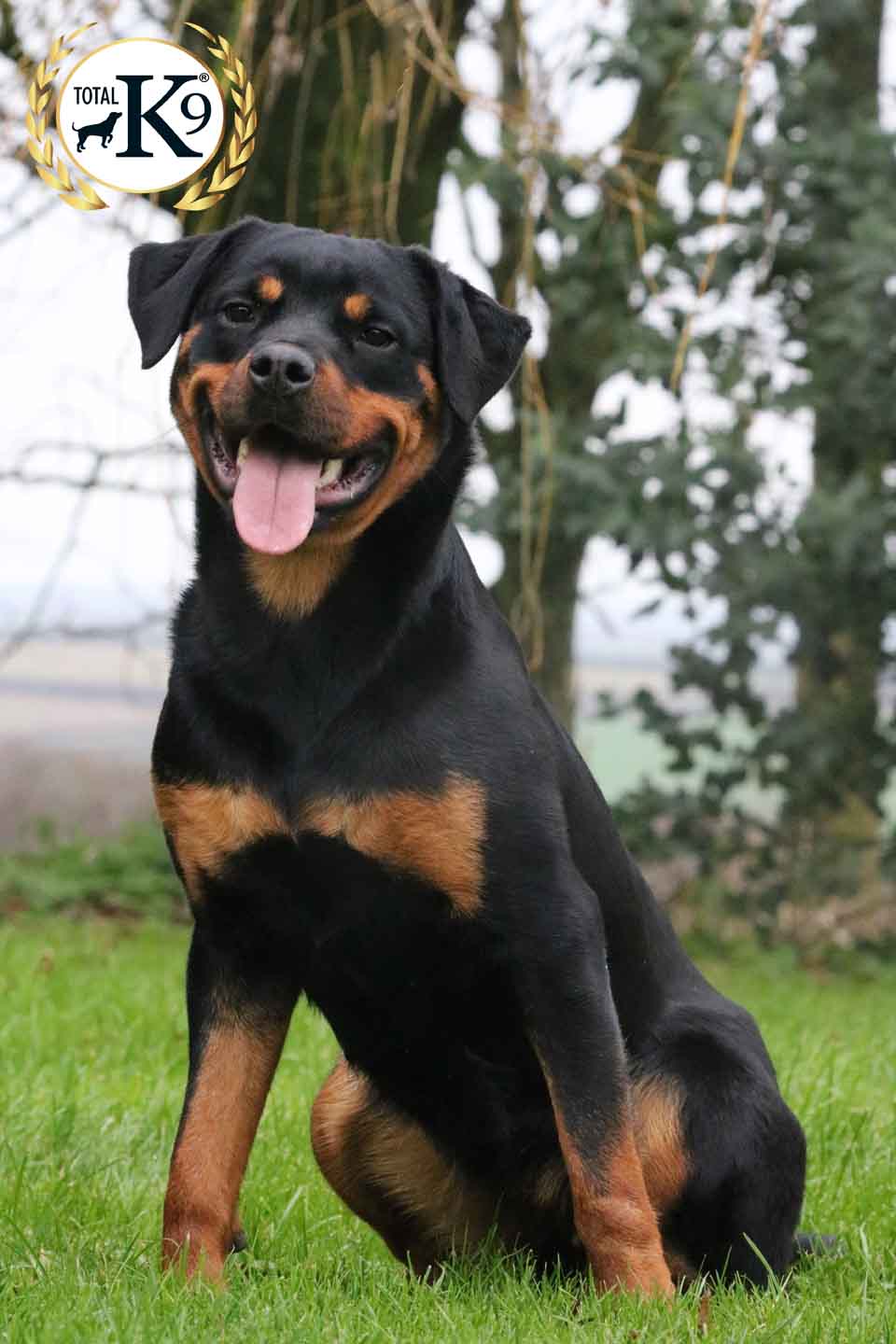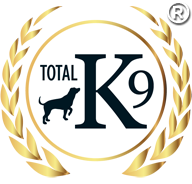Owning a protection dog is a fantastic way to invite a new member of the family into your home while also adding an extra level of defence. These dogs are more than just animal companions – they are highly trained to help protect you, your family and your property. If you’re thinking about bringing a protection dog into your home, it really helps to understand what these dogs are all about, what they need from you and what to expect in a general sense from having them in your home. So, in this article, we’ll tell you all you need to know about owning a protection dog.
What is a Protection Dog?
A protection dog is specifically trained to guard against, and watch for, unwanted or unexpected people or animals. Unlike a regular pet, a protection dog is capable of defending its owner in various situations while being safe around family and friends. These dogs are trained to differentiate between normal behaviour and potential threats, making them reliable in times of danger.
Legal Considerations
In the UK, the ownership and training of protection dogs fall under specific legal frameworks that ensure the safety of both the public and the dog. The Dangerous Dogs Act 1991 is a key piece of legislation that any potential protection dog owner should understand. This act covers which breeds are considered dangerous and the legal implications of your dog’s actions.
Training Regulations
The training of protection dogs must be done by professionals who are licensed and follow humane methods. It is illegal to train a dog in a way that encourages aggression in public spaces or towards other animals. By working with experts like our team at TOTALK9, you stay compliant with the law and ensure that your protection dog is competently and compassionately trained.
Training a Protection Dog
Training a protection dog involves a comprehensive process that equips them with the skills necessary to protect you and your property while ensuring they remain controlled and disciplined. Here’s an expanded look at what training entails, the methods used, and how to maintain a dog’s training and responsiveness over time.
Choosing the Right Trainer
The importance of selecting a qualified and experienced protection dog trainer cannot be overstated. A reputable trainer like one of our team at TOTALK9 will use ethical methods, understand the specific breed characteristics, and tailor the training to suit the dog’s individual temperament and your security needs. Always look for trainers who are accredited by recognised bodies such as the National Association of Security Dog Users (NASDU) or the British Institute of Professional Dog Trainers (BIPDT).
At TOTALK9, we walk our dogs through various training phases during dog training to cover all areas of what makes a protection dog effective and well-rounded. These phases include:
• Basic Obedience: The foundation of protection dog training starts with basic obedience. This includes teaching the dog commands such as sit, stay, come, heel, and down. The dog must perform these commands consistently in any environment, ensuring they are under control at all times.
• Advanced Obedience: Once basic obedience is mastered, the training advances to more complex commands that require the dog to perform tasks from a distance, maintain positions for longer periods, or obey commands over distractions.
• Agility Training: Agility training helps improve the dog’s physical conditioning, coordination, and ability to navigate obstacles. This is particularly important for protection dogs, as they may need to manoeuvre through challenging environments during a security task.
• Threat Discrimination: Protection dogs are trained to distinguish between normal and threatening behaviours in humans. This training involves exposing the dog to various scenarios to ensure they do not react aggressively to non-threatening situations.
• Attack and Guard Training: This is a controlled aspect of training where the dog learns to stop or apprehend a threat on command and to cease the attack when told to do so. Importantly, this training is done in a way that teaches the dog to use force proportionately.
• Scenario-Based Training: Real-life scenarios are simulated to ensure the dog can effectively translate their training into practical applications. This includes scenarios like protecting an asset while in motion, defending against multiple attackers, or operating in high-stress or crowded environments.
Maintaining Training
The effectiveness of a protection dog depends not only on their initial training but also on continuous practice and reinforcement. Ideally, lessons should be regular and in short bursts to keep the dog engaged and make sure the lessons are being absorbed. Some useful maintenance training exercises include:
• Regular Drills: Conduct regular training sessions to reinforce learned commands and behaviours. This ensures the dog remains sharp and responsive.
• Professional Refresher Courses: Enrolling the dog in periodic training courses with professionals can help maintain their skills at a peak level and stop bad habits and behavioural problems from developing.
• Daily Discipline: Incorporate aspects of their training into daily routines. For example, use command sequences during walks or play sessions to keep their skills honed.
Socialisation
Proper socialisation is a key way of ensuring that a protection dog is well-rounded and can distinguish between normal social interactions and genuine threats. This involves exposing the dog to a variety of environments, people, and other animals from an early age. Socialisation helps mitigate unwarranted aggressive behaviour and ensures the dog is stable and reliable in various public settings.
Owner Training
Lastly, it is important you are also trained to handle the protection dog. Owners should understand how to give commands correctly, how to read their dog’s behaviour, and how to maintain the training protocols established by professional trainers.
Training a protection dog is a dynamic and ongoing process that requires dedication and a clear understanding of the goals and responsibilities involved in owning such a specialised animal. With the right training and maintenance, a protection dog can be an invaluable part of your personal security strategy.
Living with a Protection Dog
Living with a protection dog is a unique experience that requires a special understanding of their needs and behaviours. Protection dogs thrive on routine and structure. Establishing and maintaining a daily schedule is really important for their physical and mental well-being. A typical day should include:
• Physical Exercise: Adequate exercise is a cornerstone of a happy and healthy protection dog. These dogs are usually high-energy breeds that require plenty of physical activity to stay healthy and alert. This could include long walks, runs, or specific agility exercises.
• Mental Stimulation: These dogs also need mental challenges to prevent boredom and maintain sharpness. Puzzle toys, obedience training sessions, and tactical games that reinforce their training can provide this mental stimulation.
• Training Reinforcement: Daily reinforcement of training helps keep the dog’s skills sharp. Incorporating training exercises into everyday activities can also strengthen the bond between the dog and its owner.
Family Integration
Integrating a protection dog into a family environment involves careful management, especially if there are children or other pets in the home. Slow and controlled introductions are a safe and effective way to start. The dog should learn to recognise each family member as part of their ‘pack’. This includes being comfortable and calm around all household members, understanding boundaries, and recognising the hierarchy within the home.
If there are children in the home, they must be taught how to interact safely and respectfully with the dog. This includes understanding the importance of not disturbing the dog while it is eating or sleeping and recognising signs of discomfort or stress in the dog. If other pets are in the home, the dog needs to be gradually introduced and monitored to ensure they can coexist peacefully. Professional guidance might be necessary to manage these introductions smoothly.
Health and Well-being
The health and happiness of a protection dog are as important as their training. As an owner of a protection dog, you are responsible for making sure they are in good physical and mental condition. This means regular check-ups with a vet to ensure the dog remains in good health. Keep up with vaccinations, parasite control, and regular screenings for common health issues prevalent in the breed. A high-quality diet tailored to their specific age, size, and energy level is essential for maintaining their physical condition and performance capabilities.
Protection dogs can experience stress just like any other dog. It’s important to recognise signs of stress and provide ways to help them relax and ‘switch off’ from their duties. A protection dog should enjoy a well-balanced life that is both active and relaxing in good measure.
Choosing the Right Dog for Your Needs
Selecting the right protection dog is a big decision that depends on several personal and situational factors. Here’s a more detailed exploration of how to make the best choice, including what factors to consider and the importance of professional advice.
Assessing Your Needs
Before choosing a protection dog, a clear understanding of your specific security needs, lifestyle, and household environment is necessary. Consider the following:
• Security Requirements: Are you looking for a dog because of a specific threat, or do you need a general sense of security? The level of training and type of breed will vary depending on whether you need a dog that can handle high-threat situations or a more general protective presence.
• Family Dynamics: The presence of children, elderly family members, or other pets can influence the type of protection dog best suited to your environment. Some breeds are more suitable for families, offering both protection and a gentle temperament.
• Physical Environment: The size of your living area should also be considered. Larger breeds may need more space to move around, so a spacious home with a yard is ideal. For smaller spaces, a smaller but still capable breed might be more appropriate.
• Lifestyle: Your daily routine and activity level should match your dog’s needs. Active individuals who can take their dogs on long walks or runs are better suited to high-energy breeds.
Choosing the Right Breed
The breed of the protection dog you choose is an important consideration, as each breed comes with its own characteristics and needs. Below are a few of the most popular options for protection dogs and some of their key traits:
• German Shepherd: Known for their intelligence and versatility, German Shepherds are one of the most popular choices for protection dogs. They are strong, obedient, and have a high working capacity.
• Belgian Malinois: Similar to the German Shepherd in their protective instincts but often smaller and with more energy, making them suitable for active households.
• Rottweiler: With a natural guarding instinct, Rottweilers are powerful dogs that are loyal to their families. They require careful training and socialisation due to their strength and size.
• Doberman Pinscher: Known for their speed and stamina, Dobermans are effective as protection dogs and are also known for their loyalty and intelligence.
Find Your Perfect Protection Dog at TOTALK9
Owning a protection dog in the UK is a significant responsibility that requires thorough preparation and commitment. Understanding the legal implications, selecting the right breed, ensuring proper training, and integrating the dog into your family are all key steps in becoming a responsible owner. With the right approach, a protection dog can be a loyal and effective protector of your home and loved ones.
If you’re looking for assistance in finding a protection dog that suits your needs, then our team at TOTALK9 would love to help. Contact us today to discuss your needs further or learn about our dog training courses.

